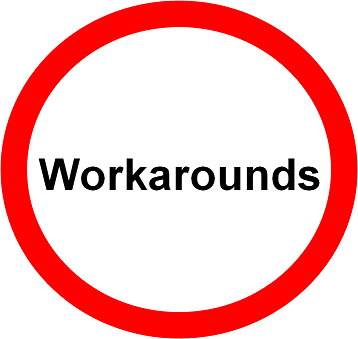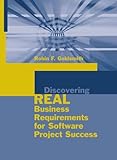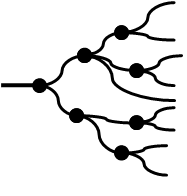Agile 2009: so many choices, so little time
The moment comes nearer when I have to decide which Agile 2009 sessions I want to attend. With so many sessions, the choice is difficult. So, let’s start by making a shortlist.
Monday
Morning:
- 11:00-12:30 “Agile Grows up: The Agile Business Analyst” (Columbus IJ) by Steve Adolph because I believe that an Agile Business Analyst can help find more value.
- 11:00-12:30 “Developing Agile Leaders and Teams: A Developmental & Transformational Path” (Columbus GH) by Gilles Brouillette because we need to form tomorrow’s leaders if we want our agile improvements to endure when we leave the customer.
Afternoon:
- 14:00-14:45 “New Approaches to Risk Management” (Grand Ballroom) by David Anderson because risk management is how we reliably increase our chances of success.
- 14:00-15:30 “Advances in Release Planning” (Crystal A) by Jim Highsmith because most customer want, need and deserve to know “when will it be done and what’s this going to cost me?”
- 14:00-17:30 “Creating Agile Simulations and Games for Coaches and Consultants” (Columbus GH) because I get paid to make games and play them. It is a long session, though.
- 14:00-15:30 “An introduction to Agile Through the Theory of Constraints” (Grand Ballroom B) by JB Rainsberger because ToC is a powerful tool to understand and improve processes, as we’ll show in our Bottleneck game on Wednesday morning.
- 16:00-17:30 “Mapping the Agile Enablement Battlefield” by George Schlitz and Giora Morein because we need to understand the dangers that agile teams face.
- 16:00-17:30 “Team Start-up: one of the first Agile Adoption activities” by Lyssa Adkins because the first few days with a new team can make a world of difference in the end.
- 16:00-16:45 “Giving and receiving effective feedback” by Liz Keogh because I listen to feedback but don’t always hear it.
Tuesday
Morning
- 11:00-12:30 “Don’t Sell Buzzwords to Business Leaders, Learn How to Describe Real Value” (Toronto) by Richard Sheridan and Clement Goebel because I want to get better at describing the value of projects and change.
- 11:00-12:00 “The Beer Game with Agile Teams – MIT Game Theory in Agile Project Management“(Regency A) ‘by Tom Looy because of the mix of systems thinking, lean and agilee.
- 11:00-12:00 “Risk and Risk Management – Theory and Practice” (San Francisco) by Chris Matts and Todd Little because I want to learn more about the practice of risk management from two different fields.
- 11:45-12:30 “Top Ten Tips for Agile Coaches” (Regency B)Â by Rachel Davies and Liz Sedley because I want to share coaching stories with the authors of the Agile Coaching book.
Afternoon
- 14:00-17:30 “Barely Sufficient Portfolio Management” (Crystal C) by Todd Little and Kent McDonald because this seems complementary to our own “The Business Value Game: How to build and use a Business Value Model” game and approach on Wednesday afternoon.
- 14:00-15:30 “Facilitation Patterns and Antipatterns” (Regency A) by Steve “Doc” List because I fear I know more antipatterns than patterns.
- 16:00-17:30 “Diagrams for understanding and improving Agile practice” (Atlanta) by Bonnie Aumann and Arlo Belshee because of the systems thinking approach to understanding and explaining agile practices
- 16:00-17:30 “How to Develop Your Leadership Power Daily: An Agile Approach to Growth” (Regency A) by Chris Avery because I regularly use Chris’s Responsibility Model and this session proposes some new problem solving methods
That’s a lot of options!
Many options means I have many choices to get value for money.
As Portia says: “It’s always better to have more options than too few.”
Choosing is for later. First let’s go see some of Chicago and fulfill some of the acceptance criteria of my “tourist” User Story.
TO make the long trip worthwhile
AS A tourist
I NEED to see or do things that are uniquely of Chicago
Acceptance tests:
- Have I seen “Nighthawks”?
- Have I seen one building or exhibition that’s unique for Chicago?
 Imagine this situation: the CIO of a large company decrees that from now “all applications we develop must be browser based“. This becomes a non-negotiable constraint for every new project.
Imagine this situation: the CIO of a large company decrees that from now “all applications we develop must be browser based“. This becomes a non-negotiable constraint for every new project.






